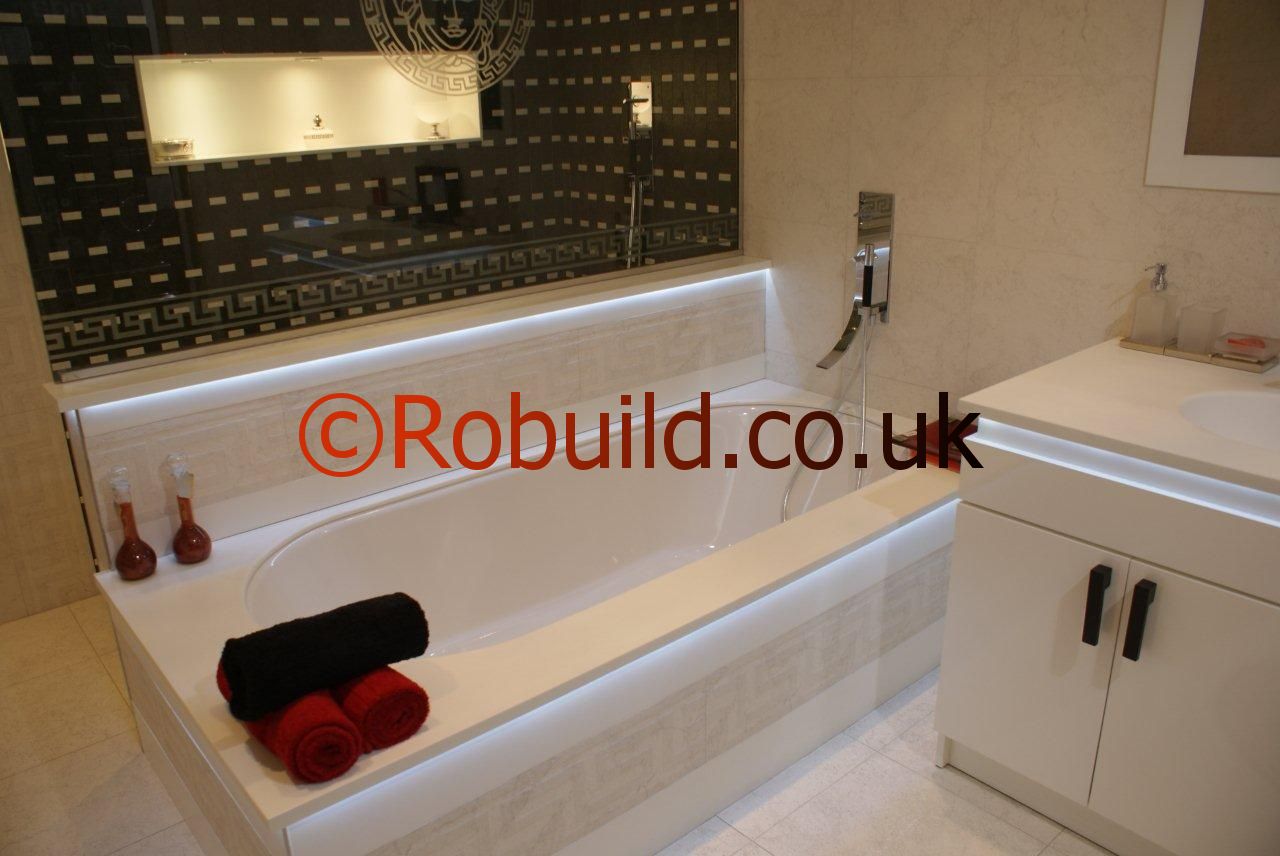The days are gone when baths were tall cast iron structures with ornate exposed legs. Some period bathrooms can look good with cast iron baths too.

The simple lines of a modern bathroom require the sides of a bath to be boxed in. Boxing-in a bath is a comparatively simple job and can be done with a wide range of tiles, plastic laminate, tongued and grooved timber boarding, or even gloss painted plywood.
None of these presents any serious technical problems. All these surfacing materials can be mounted on a simple but robust wooden frame fastened to the floor around the edge of the bath. The installation, however, has to meet various requirements. First, the frame must be strong enough not to warp-this is a serious problem in the steamy atmosphere of bathrooms.

The tendency of wood to warp in damp air can be reduced by painting all the parts with waterproof paint or varnish on all sides, so that the humidity of the wood remains constant. Second, it must be properly fastened to the surface it touches, so that it will resist kicking, blows from mops when cleaning the floor, and so on. The frame can be nailed to a wooden floor or it can be fastened to a concrete floor with wall plugs and screws, or with masonry pins. Nearly all baths have at least one side or end against a wall, and the ends of the frame can be plugged and screwed to this too. Third, the outer surface has to be reasonably watertight, so that water does not seep down behind it and under the bath where it cannot be mopped up.
This is simply solved by setting the panel about 3mm back from the outer lip of the bath, so that any drips from it run down the front of the panel instead of seeping through its back and rotting the frame. At the same time, the join between the bath and the wall should be sealed, either with a ‘bath trim kit’ consisting of narrow tiles with an L-shaped cross section or (more simply and cheaply) with the white or clear silicone sealing obtainable from any plumbing shop.

Fourth, the pipework under the bath must be accessible for maintenance. This includes not just the taps but also the trap in the waste pipe, which has to be cleaned out occasionally. The best solution here is to screw on the panels with ‘mirror’ screws, which have decorative covers on the heads so that you don’t have to disguise them. Don’t use too many screws; six or eight is ample for each panel if it has to be removed from time to time. (It is a good idea to inspect the floorboards under a bath for wet rot every few months.)

